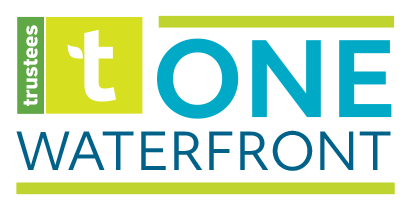Parks We Love: Chicago's Millennium Park
More than 24 acres of open space are situated near Chicago’s lakefront, on land that once was an industrial wasteland. Green parks and venues for art and performance have replaced parking lots and railroad tracks of this formerly blighted area—now a hub of residential and tourist activity.
The setting is Chicago’s world-renowned Millennium Park, recipient of a 2009 Rudy Bruner award for Urban Excellence. It’s a Park We Love because it transformed a derelict parcel of land into a thriving destination that has impacted Chicago’s economic and community growth and public engagement on multiple levels.
“Millennium Park is Chicago’s town square—a lively, spectacular gathering spot located in the heart of the city and a destination for Chicagoans and visitors alike,” described Mark Kelly, Commissioner of the Chicago Department of Cultural Affairs and Special Events in 2017.
The park is the largest public space within the city’s 319-acre Grant Park and contains many unique features for varied public use. Included among them: an interactive video sculpture and reflecting pool called the Crown Fountain; the Frank Gehry-designed 11,000 seat Jay Pritzker Pavilion; the McCormick Tribune Plaza & Ice Rink, a multipurpose venue; a tree-lined promenade for pedestrians; and popular, selfie hotspot “the Bean,” a publicly funded reflective statue formally named “Cloud Gate,” and notably the first piece of permanent, public art by artist Anish Kapoor to be installed in the U.S. All of this sits on top of a multi-level parking garage and a commuter rail station, sometimes earning the park the nickname of “world’s largest rooftop garden.”
The entire project is estimated to have cost over $490 million, with approximately 19% coming from tax money, according to the Chicago Tribune. It officially opened to the public in 2004 and rose to become the Midwest's most-visited tourist attraction, welcoming 12.9 million visitors in the second half of 2016, compared to the 9.3 million welcomed by Chicago’s popular Navy Pier in all of 2016.
"This is a tremendous recognition that we collectively as a city have done something significant and made a cultural destination," Mayor Rahm Emanuel told the Chicago Tribune at the time. He added, "When I was first thinking about building the Riverwalk, one of the pushbacks was, 'Oh, you're going to create competition with the boardwalk on Navy Pier. That hasn't happened … A world-class city has many world-class locations in it."
Today, nearly 15 years after its opening, the park continues to be a top tourist attraction for the city, with an events calendar chock full of diverse programming—everything from music festivals to peace yoga. Do a search for “Millennium Park” and a pattern of similar words emerge—architecture, art, landscape, community, iconic, landmark—all of these painting a picture of an ambitious vision come to life.
“Cloud Gate” is the first piece of permanent, public art by artist Anish Kapoor to be installed in the U.S.
In naming the park a silver medal recipient in 2009, the Rudy Bruner Award for Urban Excellence committee highlighted the visionary ideas, public engagement, effective leadership, and strong public/private partnership behind the project’s inception. The award committee noted, “The $475 million project has sparked community and economic growth, marking a significant increase in tourism and boosting real estate values and residential and commercial development...The park has become synonymous with Chicago’s identity and serves as a model for other cities.”
We most certainly agree, and are adding it to our vision board for Boston.
###
About this series: The Trustees’ One Waterfront initiative is a bold, new vision for establishing a resilient urban waterfront. Yes, the vision is big, and new for Boston, but we have the benefit of following in the footsteps of those who have paved the way. Many waterfront parks designed for climate resilience have emerged over the past few decades all along the world’s coastlines and are models to emulate and learn from. The lessons learned from these pioneering open spaces—in science, design, and beyond—have and will continue to provide The Trustees and our partners with an expansive knowledge base for planning practices as we progress toward our vision for iconic, public open spaces on the Boston Waterfront. Click here to see past posts in our ‘Parks We Love’ series.



